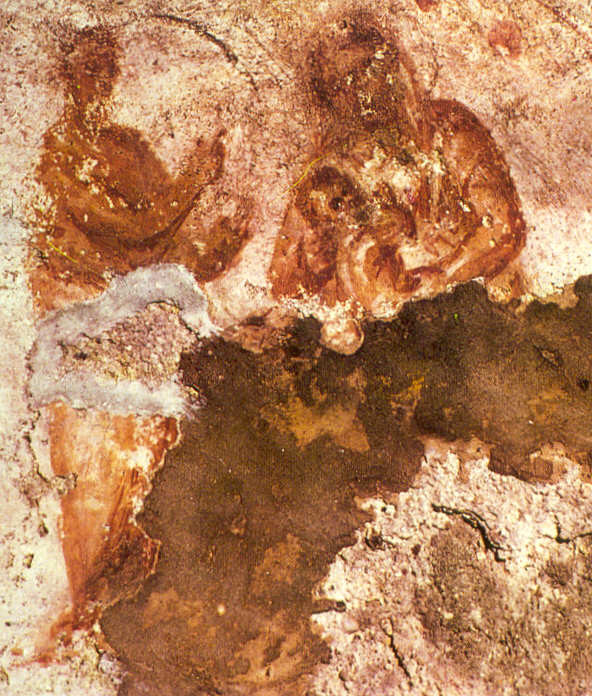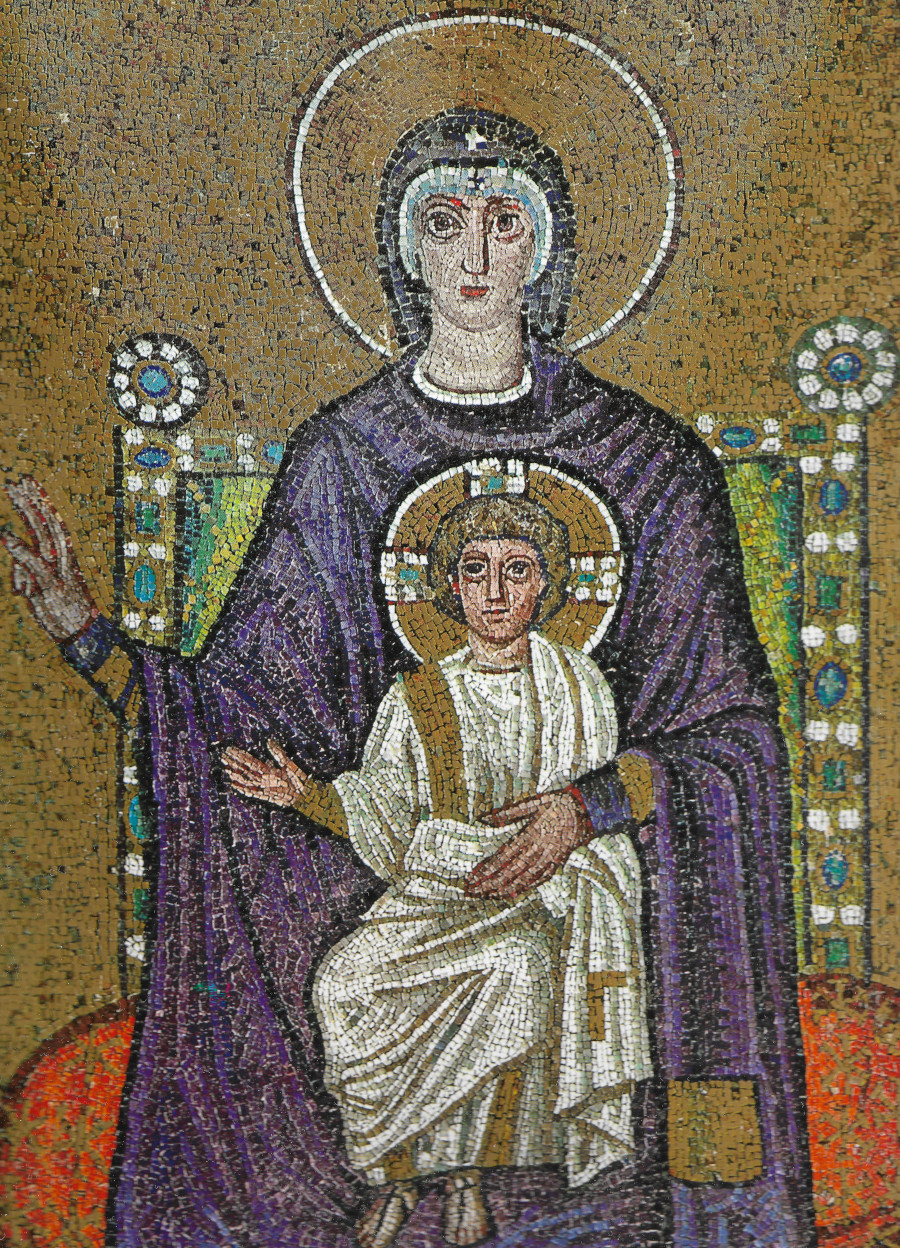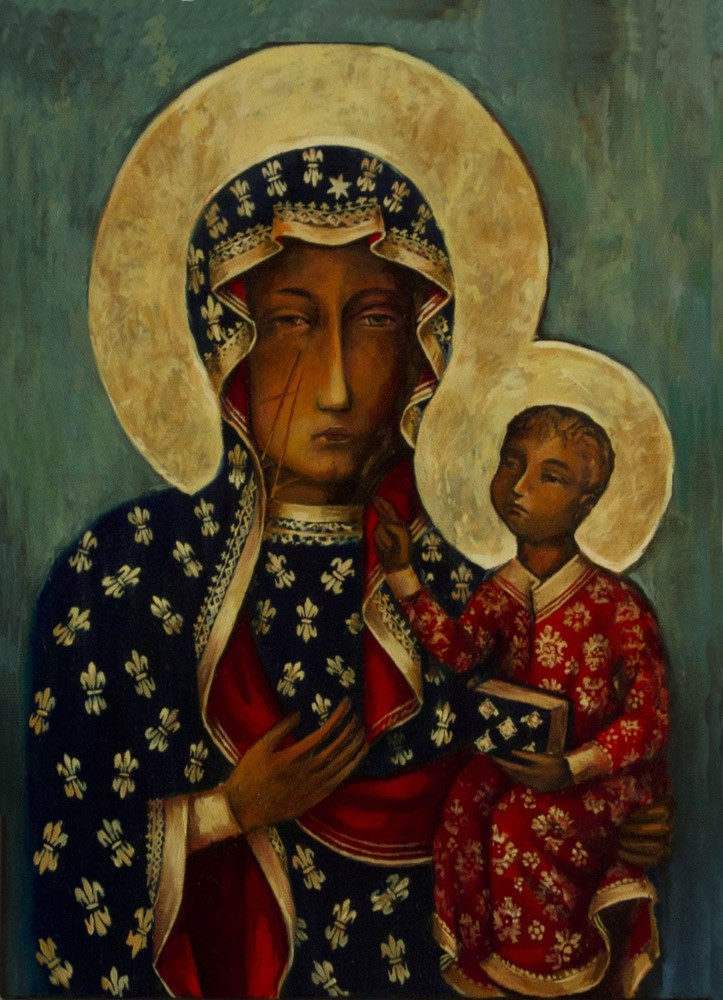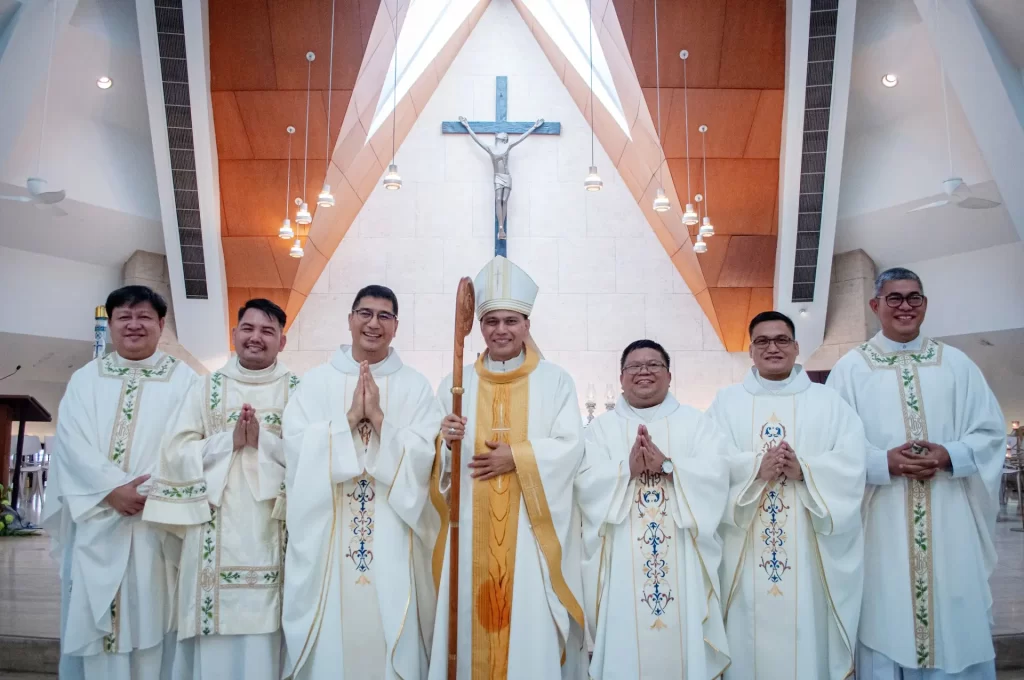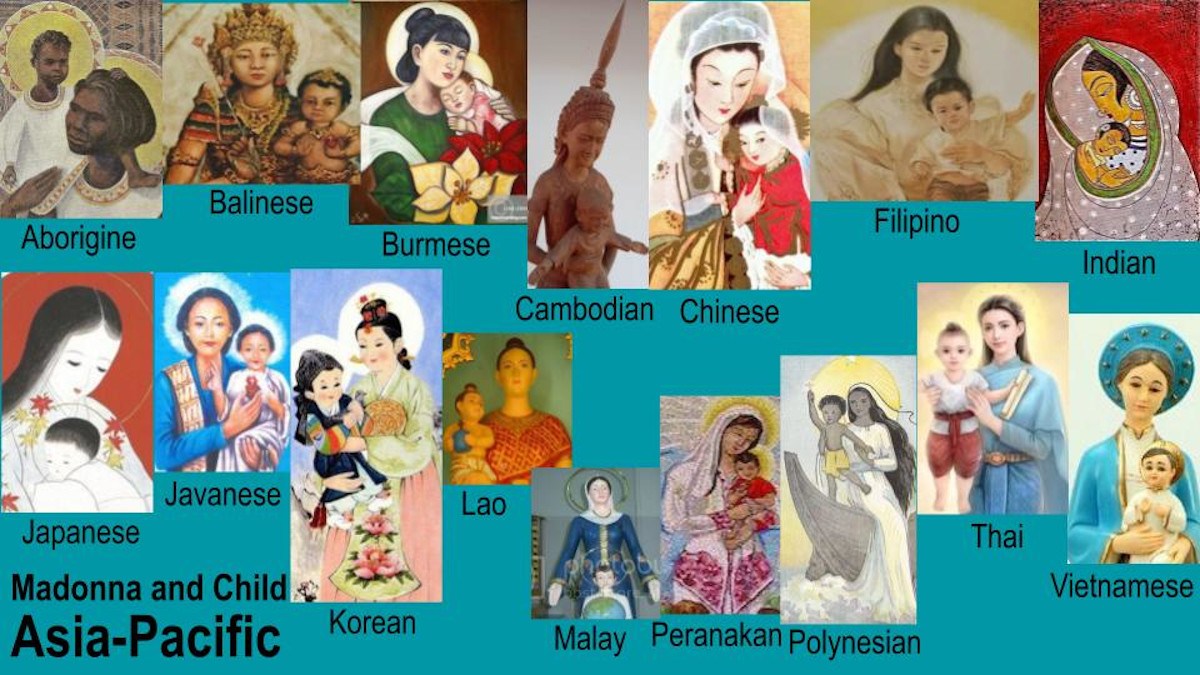
One of the possible earliest depictions of Our Lady with the Child Jesus is in the catacombs of Priscilla in Rome. This rudimentary fresco, which is really a sketch drawn in the second or third century, presents Mary nursing the baby Jesus on her lap. Next to her is the figure of a man who is pointing up to a star above them which is probably the star of Bethlehem. There is a dispute on the identity of this man. It could be the prophet Isaiah who predicted that “the Lord himself will give you a sign. Behold, the virgin shall conceive and bear a son, and shall call his name Immanuel.” (Is 7:14) It could also be the prophet Balaam who said, “a star shall come out of Jacob, and a scepter shall rise out of Israel.” (Nu 24:17) The latter could most probably be the case as the man has his finger pointing up to the said star.
Next would come the depiction of Mary as Theotokos (God-bearer) and the baby Jesus in the Greek-speaking world, for example icons in the Byzantine tradition, which later would develop into diverse enduring beautiful iconography of the Eastern churches. Understandably, these images of Our Lady and Jesus are Mediterranean in their features and clothing.
We have numerous depictions of Our Lady holding the baby Jesus in her arms across cultures and time. Even though Jesus was born a Jew and of a Jewish mother, Christians through the centuries have appropriated them within their own culture and time. Historically, Jesus might have been born in the Jewish civilisation and culture, but this Jesus as the Son of God, fully divine and human at the same time, can be experienced within our own culture and context. This forms the basis of inculturation of our faith as well.
We are so used to seeing the Madonna and Child in European dress and with white features, sometimes even with blue eyes. This in itself is already an inculturation because the images of the Jewish Mary and Jesus were first rendered into Greek thought, art and culture, and later into Roman and European civilisations. Relevant examples of Madonna and Child in Italian period dress would be the paintings by Leonardo da Vinci and Raphael. European colonialisation brought these images to the rest of the world when the exploration of the world beyond Europe began. At the same time, there were already some other inculturations before the widespread of Euro-centric Christianity, for example, early Ethiopian images of Mary and her Child.
Sinicisation of European images of Mary and Jesus started quite early in China after Mateo Ricci arrived there, but it was halted during the colonial control of China in the nineteenth and early twentieth centuries, especially during the French protectorate period. It grew again in the later twentieth century. Paintings of Our Lady and the Child Jesus in Mughal style in the Indian subcontinent were also employed in the sixteenth and seventeenth century by early Christian missionaries.
Nowadays depictions of Madonna and the Child Jesus in different cultural dresses and features can be found all over the world. These may cause some kind of scandal because Mary and Jesus were Jews, but they are not featured as so. Moreover, these cultural depictions can be too close for comfort for some due to their likeness to pagan idols. Some new converts say they left the previous practise of their religion in order to embrace Christianity, and they don’t want to return to cultural portrayals of Catholic images that resemble images they were once familiar with. On the other hand, there are also new converts who feel at peace with these cultural images because it means they don’t have to totally disassociate themselves from their culture. By embracing Christianity, it does not mean they have to throw away their culture, but to appropriate their long held culture in the light of their new found faith. This is what the Church meant by inculturation.
The Christian cultural representations of holy images are not something new or only came about from the Second Vatican Council. In mediaeval and Renaissance Europe, there were already some notable exceptions that might have been scandalous at that time. A good example is the prevalence of Black Madonna images; the most famous statue is Our Lady of Montserrat and a well-known icon is Our Lady of Czestochowa. Some say these images of Our Lady with dark skin were once white, but became dark over time due to exposure to candle soot. My question is how come these statues were not cleaned when their faces turned black. Others give the opinion that the cult of the Black Madonna beacons to an ancient cultural memory of the African origin of humanity which has strong symbolic meaning connected to love, nurturing, protection, transformation, power, wisdom, fertility, and justice.
In 1531, Our Lady appeared to a local peasant by the name of Juan Diego Cuauhtlatoatzin with the features and dress of the indigenous people of present-day Mexico. Her image (without the baby Jesus) had been miraculously imprinted on the cloak of this seer, and she is known as Our Lady of Guadalupe of the Americas. This is another example of an early depiction of Our Lady in cultural dress and features that is so different from Eurocentric images of the Madonna.
Another interesting cultural depiction from Renaissance Europe is from the Italian painter, Parmigianino done around 1535. This artwork was considered controversial in his time because of the curious length of Mary’s swan-like neck. Besides her neck, her shoulders and fingers have also been elongated to make her appear more elegant and graceful. She has almost unearthly features. These limbs, ivory marble skin, and a blithe attitude portray a different idea of ideal beauty which some critics have commented that Parmigianino was trying to eroticise the scene.
Certain cultural depictions of Our Lady and the Child Jesus can be discriminatory in the sense they portray the elements of the dominant culture of a certain country. This is especially so when there is no national representation because there are usually a number of ethnicities in a country. Which culture best represents a national identity, for example, in Malaysia, Singapore, Myanmar, etc? Malaysia and Singapore have many races while Myanmar, though made up of one dominant race, namely, the Burmese, has many hill tribes.
Other than that, the question also arises whether to depict Mary and Jesus in the dress of the nobility of that culture or the attire of the peasant. Some argue that since Jesus is also divine, the mother-son duo should be portrayed as royalty. Others assert that in order to render them close to the common people, they should be illustrated as thus. If you ask my opinion, the two contrasting models can be used for the sake of variety to represent a certain culture. The whole subject of this topic of the Cultural Madonna and Child is precisely to inspire diversity, either within a culture or among cultures.
In early 2020, the Covid-19 pandemic struck the whole world and it continues even now. This painting of the Madonna and Child by Venetian artist, Maria Terzi, which presents them wearing face masks, scandalised some Catholics because they contend that Jesus as the divine Son of God and Mary who is immaculate would not transmit or be susceptible to the virus. Why put masks on their faces then? However, I would look at it positively in the sense that Jesus and Mary stand in solidarity with us in our suffering. By them donning face masks, they want to go through the same challenges of this pandemic with us. This is another example of a cultural Madonna and Child which transcends merely external dress and features.
These various cultural depictions are prayerful, poignant, and powerful representations of our dynamic faith. These illustrations can move us to be more prayerful in our relationship with God, Mother Mary, and the saints. They are also poignant in the sense that they draw out the deep contentious passionate emotions within us in order to make us question our faith in a positive manner, and make us be more aware of God’s presence in cultures. Lastly, they are powerful because they are touching signs to those who are not Catholics that God can come very near to us in our respective cultures without us having to abandon our long held traditions.
This article is an extract of the online exposition and meditation he gave for Kingsmead Centre for Ignatian Spirituality and Counselling.

